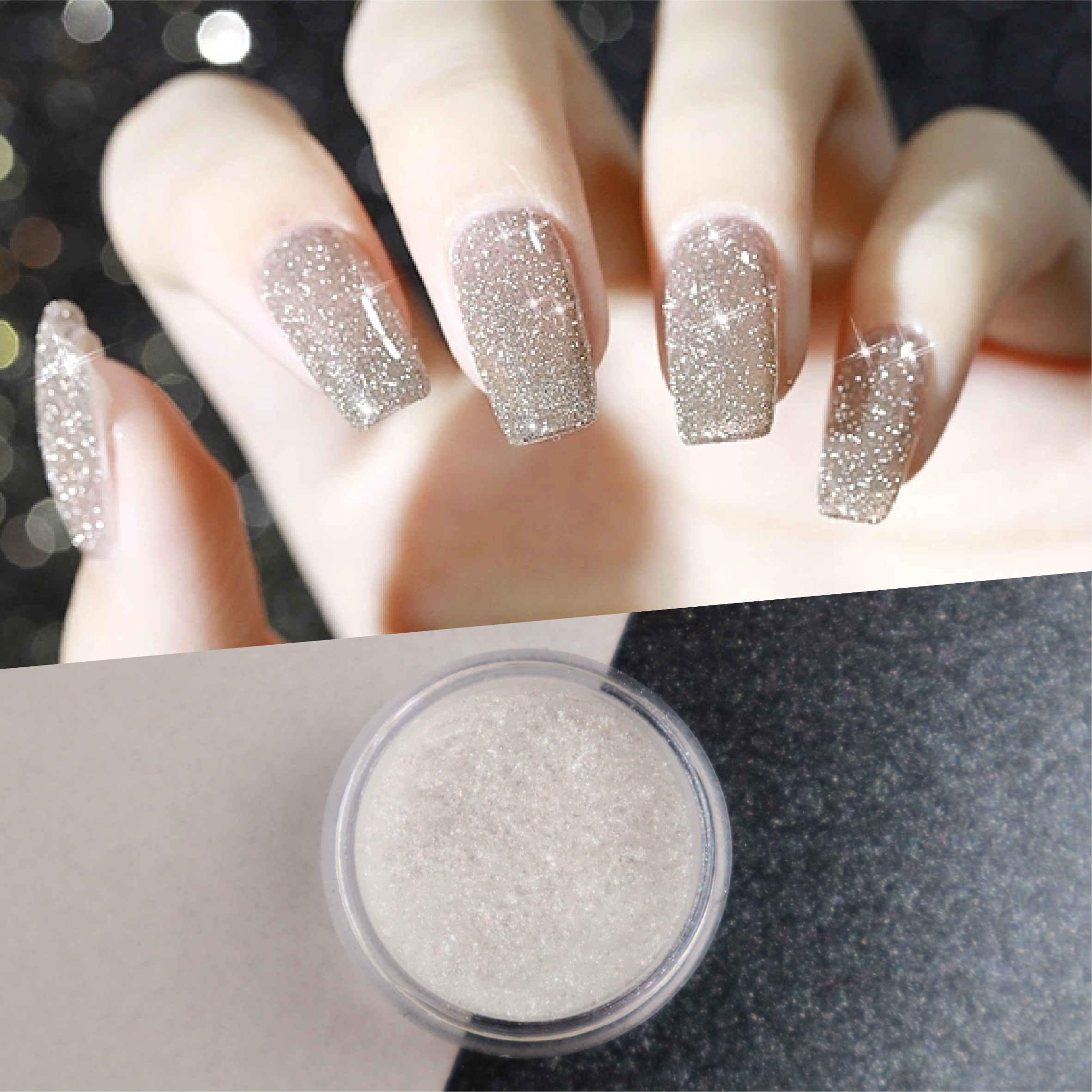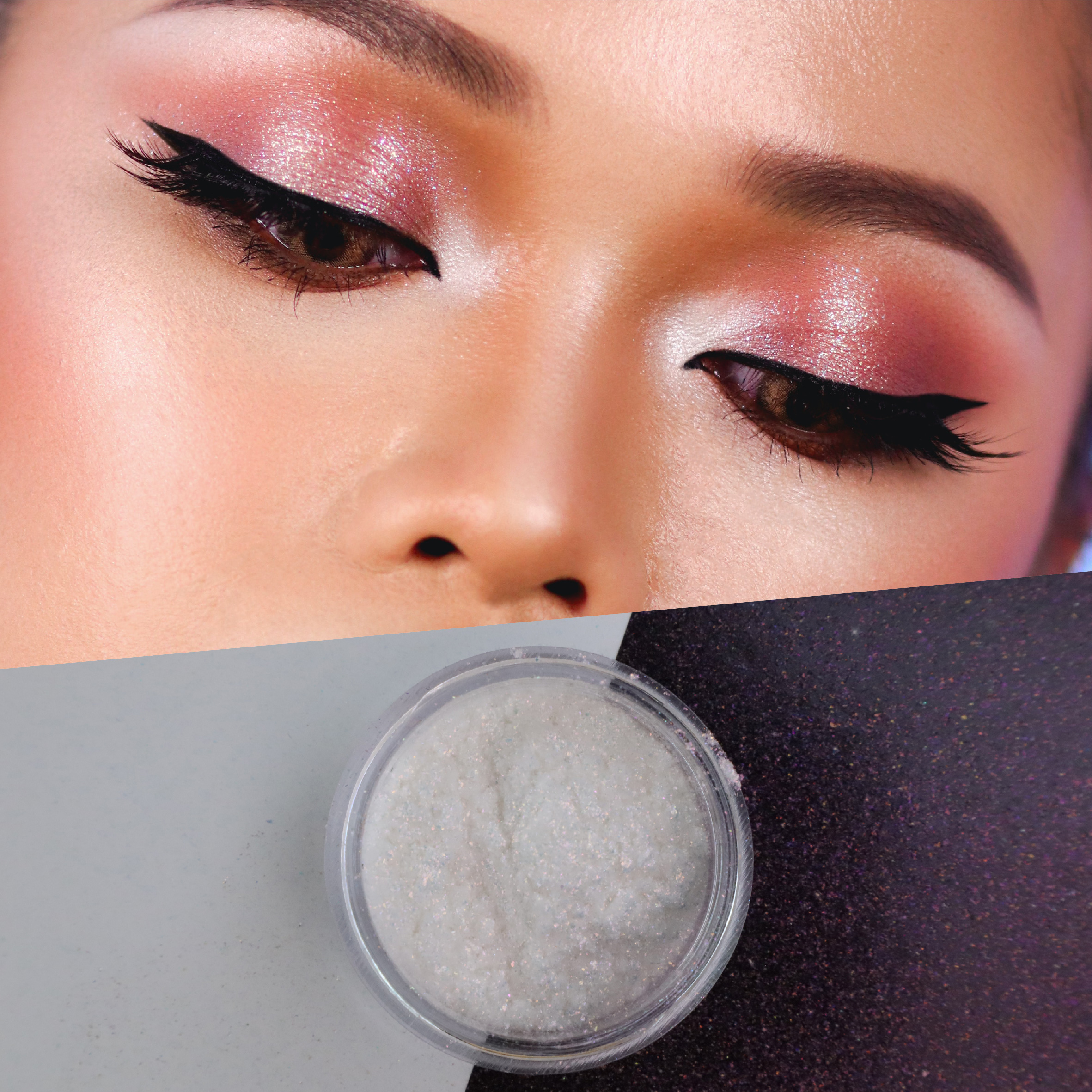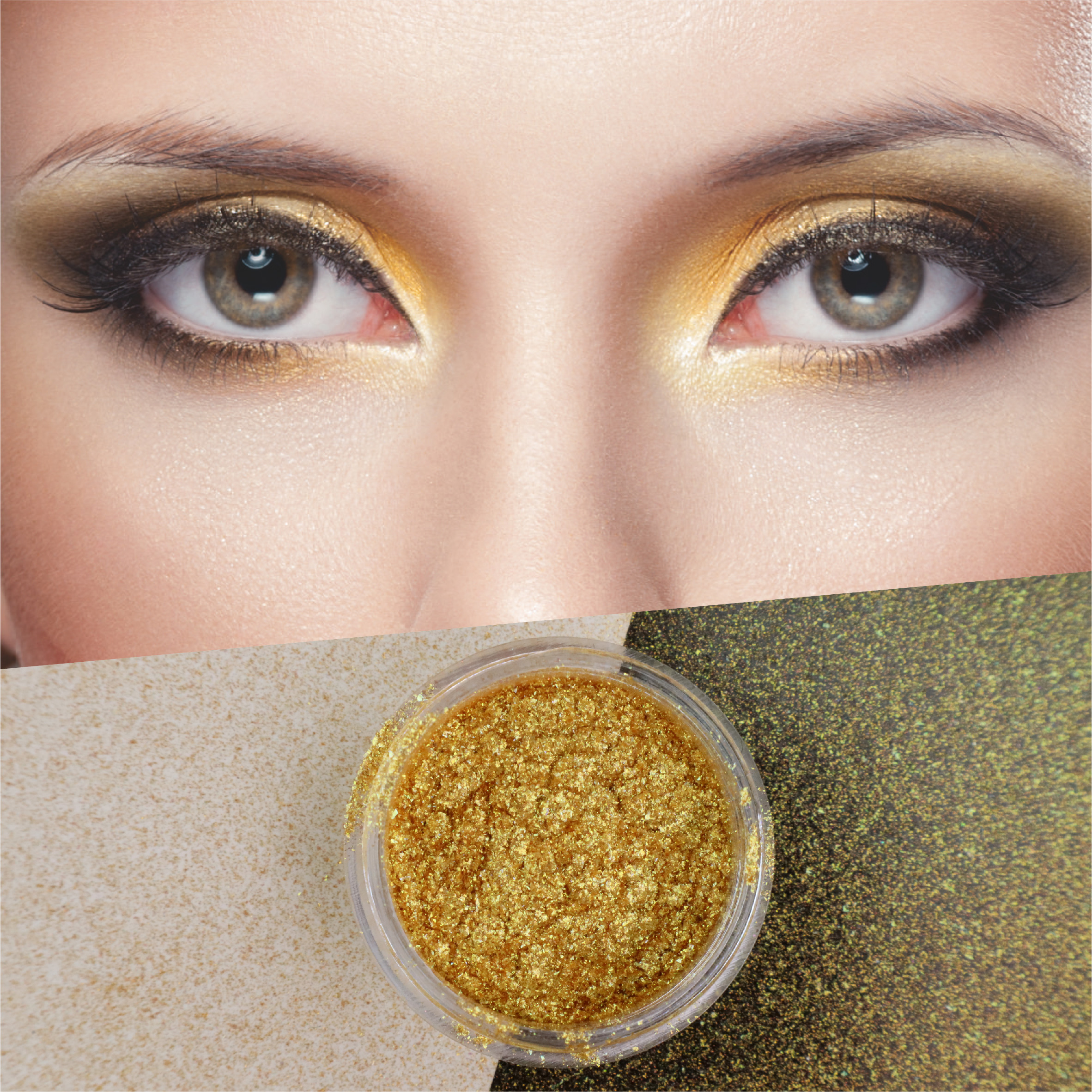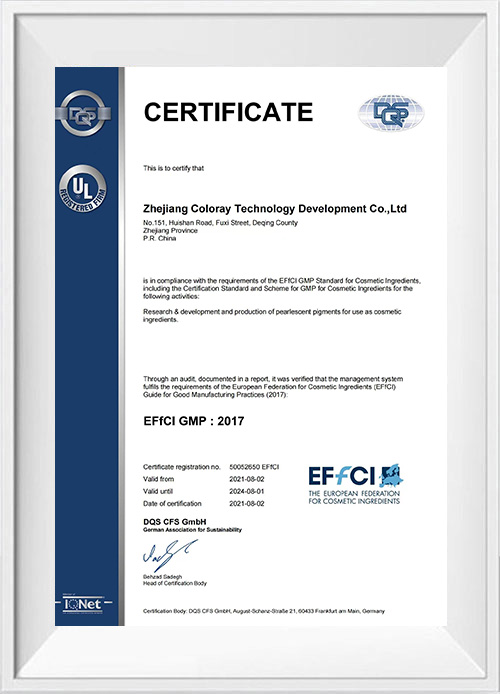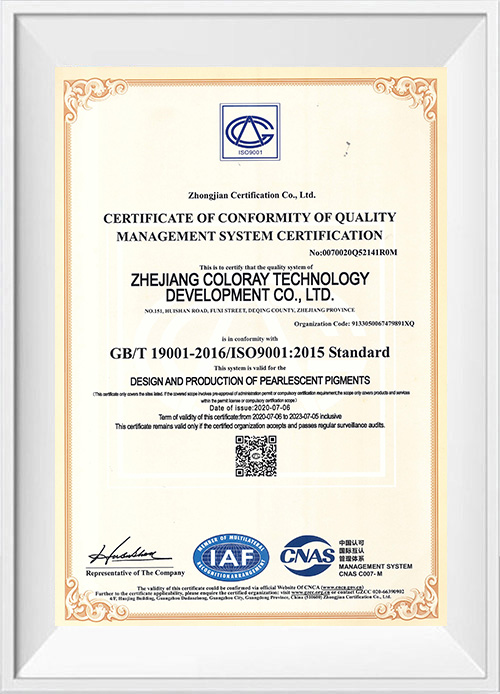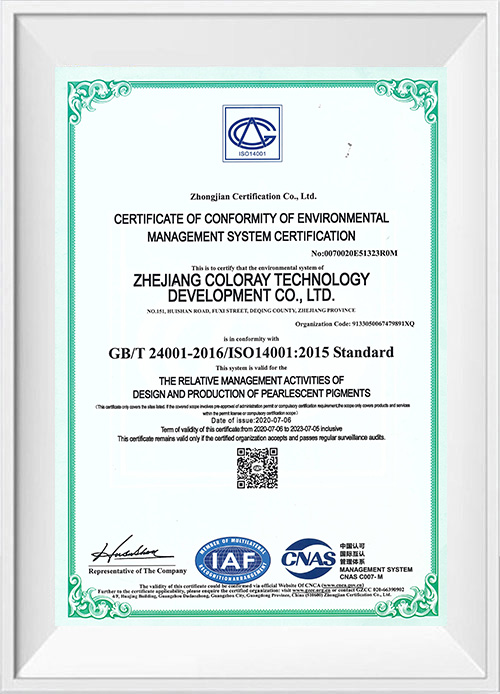Elmas inci pigmentlerinin neden genellikle iyi UV direnci vardır?
Elmas İnci Pigmentleri Genellikle benzersiz bileşimleri ve yapısal tasarımları nedeniyle genellikle iyi UV direncine sahiptir. Aşağıda ayrıntılı bir açıklama bulunmaktadır.
Ana bileşenlerin istikrarı. Titanyum dioksit, yüksek ışık stabilitesi ve UV yansıma yeteneğine sahip elmas inci pigmentleri için yaygın bir kaplama malzemesidir. Altta yatan malzemelere nüfuz etmelerini ve zarar vermesini önlemek için UV ışınlarını etkili bir şekilde yansıtabilir ve dağıtabilir. Titanium dioxide not only prevents UV damage to the pigment itself, but also protects the application surface, such as automotive paint or architectural paint, from the effects of UV.
Mika, iyi kimyasal inertlik ve termal stabiliteye sahip elmas inci pigmentlerinin temel malzemesidir. Pul yapısı, UV direncini daha da iyileştirmek için fiziksel bir bariyer sağlarken, pigmentin optik özelliklerinin arttırılmasına yardımcı olur.
Yapısal tasarımın avantajları. Diamond pearlescent pigments usually adopt a multi-layer coating structure, that is, multiple layers of titanium dioxide or other oxides are coated on mica sheets. This structure can effectively increase the reflection and scattering ability of the pigment, so that light is reflected multiple times between the layers, weakening the penetration of UV rays.
The multi-layer structure can also reflect light at different angles, enhancing the brightness and glittering effect of the pigment, while protecting the underlying material from direct exposure to UV rays.
Nanoparçacık teknolojisi. Nanoparçacık teknolojisi modern pigment üretim süreçlerinde yaygın olarak kullanılmaktadır. Nano-scale titanium dioxide particles have a higher surface area and stronger light reflection ability, which can effectively block ultraviolet rays. Nanopartiküllerin düzgün dağılımı ve yakın düzenlemesi, pigmentin optik özelliklerini ve UV direncini daha da geliştirir.
Yüzey tedavi teknolojisi. Bazı üst düzey elmas inci pigmentleri, antioksidanlar veya UV emicileri ile kaplama gibi özel yüzey tedavilerine tabi tutulur. Bu maddeler, pigmentlere zarar vermelerini önlemek için ultraviyole ışınlarını emebilir veya nötralize edebilir. Surface treatment can also enhance the weather resistance and chemical stability of the pigment, allowing it to maintain stability and gloss for a longer time in outdoor environments.
Kaplama teknolojisi. Gelişmiş kaplama teknolojisi yoluyla, pigmentin çekirdek malzemesi tamamen sabit bir dış tabakada kaplanabilir. This coating not only prevents direct contact with ultraviolet rays, but also improves the physical strength and chemical corrosion resistance of the pigment.
Elmas inci pigmentleri, geliştirme ve üretim sırasında titiz UV yaşlanma testlerine tabi tutulur. By simulating long-term UV exposure, the optical properties and physical stability of the pigment are tested to ensure its reliability in practical applications.
Kaplama teknolojisi neden elmas inci pigmentlerinin UV direncini geliştirebilir?
İnci pigmentleri, benzersiz parlaklık ve renk efektlerine sahip bir pigment türüdür. Bununla birlikte, ultraviyole (UV) ışınlama altında fotodegradasyona eğilimlidirler, bu da parlaklıklarında ve renk efektlerinde bir azalmaya neden olurlar. UV direncini artırmak için Elmas İnci Pigmentleri Bilim adamları, etkili bir yöntem - kaplama teknolojisi geliştirdiler. Aşağıda, kaplama teknolojisinin neden elmas inci pigmentlerinin UV direncini artırabileceğini ayrıntılı olarak tartışacaktır.
Kaplama teknolojisi ilkesi. Kaplama teknolojisi, inci pigmentlerinin yüzeyini bir veya daha fazla fonksiyonel malzeme katmanı ile örtme işlemini ifade eder. Bu kaplama katmanları genellikle titanyum dioksit (TIO2), silikon oksit (SIO2) veya silikon reçineler gibi inorganik veya organik malzemelerdir. Bu malzemeler, dış ortamın inci pigmentleri üzerindeki etkisini etkili bir şekilde izole etmek için koruyucu bir tabaka oluşturabilir.
Fiziksel bariyer etkisi. After the coating layer is formed, it can act as a physical barrier to prevent ultraviolet rays from directly irradiating the surface of diamond pearlescent pigments. This layer of barrier can reflect and absorb ultraviolet rays, reduce the irradiation of UV rays to the core of the pigment, and thus reduce the destructive effect of ultraviolet rays on the pigment.
Kimyasal istikrar. The coating material itself has good chemical stability and can maintain the stability of its structure and performance under ultraviolet irradiation. For example, inorganic materials such as titanium dioxide and silicon oxide are not easily photodegraded under ultraviolet irradiation, which can protect the core material of pearlescent pigments for a long time.
Oksidasyon reaksiyonunu azaltın. Ultraviolet rays can promote the occurrence of oxidation reactions, causing oxidation on the surface of the pigment, which in turn affects its optical properties. Kaplama tabakası oksijeni izole edebilir, oksidasyon reaksiyonlarının oluşumunu azaltabilir ve pigmentin stabilitesini daha da koruyabilir.
Kaplama teknolojisinin özel uygulaması. Elmas inci pigmentlerinin üretim sürecinde, kaplama teknolojisinin uygulanması genellikle aşağıdaki adımları içerir:
Ön -tedavi. Surface treatment of pearlescent pigments to remove impurities and organic matter to ensure that the coating layer can be evenly attached to the surface of the pigment.
Kaplama malzemelerinin seçimi. Uygulama gereksinimlerine göre uygun kaplama malzemelerini seçin. Inorganic materials such as titanium dioxide and silicon oxide have excellent UV resistance, while organic materials such as silicone resins can provide better flexibility and adhesion.
Kaplama işlemi. İncili pigmentlerin yüzeyindeki kaplama malzemesini eşit olarak örtmek için uygun kaplama işlemlerini kullanın. Yaygın yöntemler arasında sol-jel yöntemi, hidrotermal yöntem ve kimyasal buhar biriktirme yöntemini içerir. Bu işlemler, kaplama tabakasının tekdüzeliğini ve bütünlüğünü sağlayabilir.
İşleme sonrası. The coated pearlescent pigment is dried, sintered and other post-processing processes to further improve the stability and adhesion of the coating layer.
